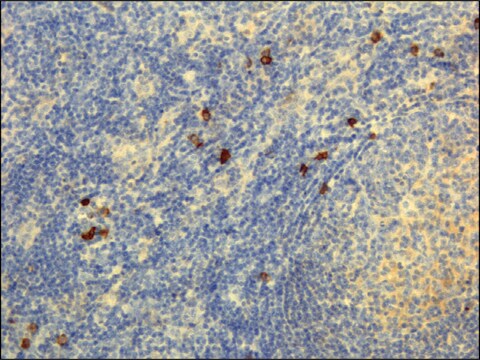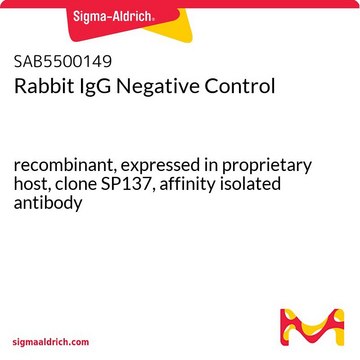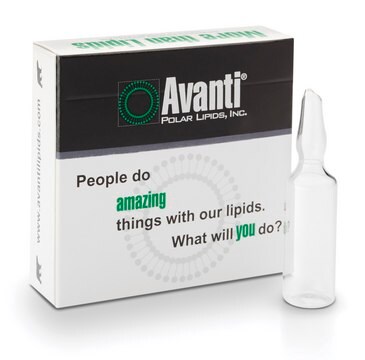F3893
Anti-Monkey IgG (whole molecule)−FITC antibody produced in rabbit
affinity isolated antibody, buffered aqueous solution
Synonym(s):
Rabbit Anti-Monkey IgG (whole molecule)−Fluorescein isothiocyanate
Sign Into View Organizational & Contract Pricing
All Photos(1)
About This Item
Recommended Products
biological source
rabbit
Quality Level
conjugate
FITC conjugate
antibody form
affinity isolated antibody
antibody product type
secondary antibodies
clone
polyclonal
form
buffered aqueous solution
storage condition
protect from light
technique(s)
dot immunobinding: 1:64
storage temp.
−20°C
target post-translational modification
unmodified
General description
IgG antibody subtype is the most abundant serum immunoglobulins of the immune system. It is secreted by B cells and is found in blood and extracellular fluids and provides protection from infections caused by bacteria, fungi and viruses. Maternal IgG is transferred to fetus through the placenta that is vital for immune defence of the neonate against infections.
Specificity
Anti-Monkey IgG (whole molecule) antibody recognizes all monkey IgG subclasses. Rabbit anti-Monkey IgG is conjugated to Fluorescein Isothiocyanate (FITC).The identity and purity of affinity isolated antibody is established by immunoelectrophoresis.
Immunogen
Purified monkey IgG (rhesus)
Application
Anti-Monkey IgG (whole molecule)-FITC antibody produced in rabbit has been used in western blotting and indirect immunofluorescence.
Physical form
Solution in 0.01 M phosphate buffered saline, pH 7.4, containing 15 mM sodium azide.
Disclaimer
Unless otherwise stated in our catalog or other company documentation accompanying the product(s), our products are intended for research use only and are not to be used for any other purpose, which includes but is not limited to, unauthorized commercial uses, in vitro diagnostic uses, ex vivo or in vivo therapeutic uses or any type of consumption or application to humans or animals.
Not finding the right product?
Try our Product Selector Tool.
Storage Class Code
10 - Combustible liquids
WGK
nwg
Flash Point(F)
Not applicable
Flash Point(C)
Not applicable
Personal Protective Equipment
dust mask type N95 (US), Eyeshields, Gloves
Choose from one of the most recent versions:
Already Own This Product?
Find documentation for the products that you have recently purchased in the Document Library.
SIVsm Tat, Rev, and Nef1: functional characteristics of r-GV internalization on isotypes, cytokines, and intracellular degradation
Sremac M and Stuart ES
BMC biotechnology, 10(1), 54-54 (2010)
Widespread occurrence of antibodies against circumsporozoite protein and against blood forms of Plasmodium vivax, P. falciparum and P. malariae in Brazilian wild monkeys
Duarte AMRC, et al.
Journal of Medical Primatology, 35(2), 87-96 (2006)
Ana Maria R de C Duarte et al.
Journal of medical primatology, 35(2), 87-96 (2006-03-25)
A survey of malaria antibodies was carried out over 7 years and a total of 777 serum samples from wild monkeys were collected in three distinct ecological areas of Brazil where autochthonous malaria has been reported: the 'Cerrado' (similar to
SIVsm Tat, Rev, and Nef1: functional characteristics of r-GV internalization on isotypes, cytokines, and intracellular degradation
Sremac M and Stuart ES
BMC biotechnology, 10, doi:10-doi:10 (2012)
Marinko Sremac et al.
BMC biotechnology, 10, 54-54 (2010-07-21)
Recombinant gas vesicles (r-GV) from Halobacterium sp. strain SD109 expressing cassettes with different SIVsm inserts, have potential utility as an effective antigen display system for immunogen testing in vivo and for initial epitope assessments in vitro. Previous mouse model studies
Our team of scientists has experience in all areas of research including Life Science, Material Science, Chemical Synthesis, Chromatography, Analytical and many others.
Contact Technical Service








